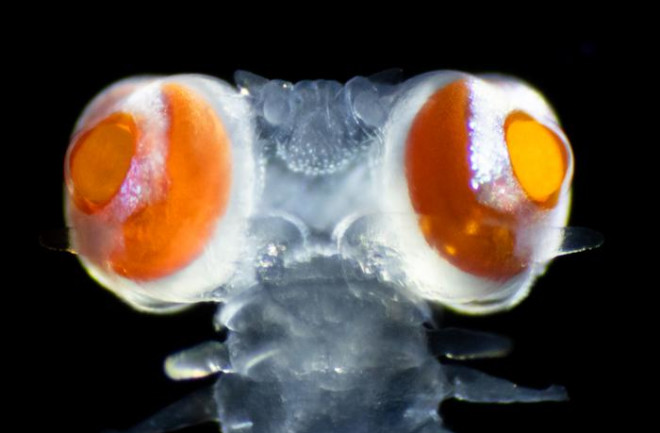Why does a creature that hunts at night need eyes that weigh about twenty times its head?
The question sounds like the set-up to a bad joke or a riddle from a sphinx. But it hooked biologist Anders Garm from the University of Copenhagen’s Department of Biology after his colleague Michael Bok at Lund University showed him a video of the Vanadis bristle worm.
The Vanadis Worm: A Marvel of Marine Biology
Vanadis bristle worms, also known as polychaetes, live on the Italian island of Ponza, just west of Naples. Although the size of their eyes alone is noteworthy, their proportion to the rest of the creature’s body is what captures one’s attention. Vanadis’s eyes look like two giant, shiny red balloons that have been strapped to a thin worm’s body. If a human’s eyes shared the same ratio to body size, they would appear “as big as millstones,” according to the paper.
Researchers found that the worm’s visual capacity is both excellent and advanced. They demonstrated that the worm can see small objects and track their movements. This visual acuity from such a tiny, simple creature is unusual because capabilities like that are usually reserved for more advanced creatures, like vertebrates, arthropods, and cephalopods.
“This is the first time that such an advanced and detailed view has been demonstrated beyond these groups,” says Garm. He adds that the worm’s eyesight is equivalent to that of mice or rats. The researchers are still unsure of why the nocturnal creatures have such acute eyesight.
Read More: The Eye-Popping Truth About These 4 Animals’ Enormous Peepers
The Mystery of UV Vision in Bristle Worms
“What they are using the eyes for is right now the one-million-dollar question,” says Garm. He has two hypotheses — both involving the worm’s ability to see UV light. First, the eyes could help detect gelatinous prey, which emit light at or near the UV spectrum. Second, the worms might be using UV bioluminescence to communicate — essentially reading each other’s body lights to “talk” to each other.
How exactly the creature can do either or both of those functions — as well as see as strongly as it does — triggers another question in Garm’s wheelhouse: how can a creature with such a simple nervous system perform such complex visual-processing tasks? He suspects that Vanadis, like other creatures with limited brain power, uses a filtering technique so that only information essential to the animal’s behavior gets through.
He will have a better idea of how that works when the scientists learn more about the exact information Vanadis’ eyes extract. Cracking that puzzle could have implications in fields like robotics because transforming these efficient ways to filter and process complex information could be turned into mathematical models and eventually integrated into computer chips.
Read More: The 5 Senses Animals Have That Humans Don't
Article Sources:
Our writers at Discovermagazine.com use peer-reviewed studies and high-quality sources for our articles, and our editors review them for accuracy and trustworthiness. Review the sources used below for this article:
Anders Garm. Associate Professor at University of Copenhagen’s Department of Biology
Michael Bok. Researcher at Lund University
Current Biology. High-resolution vision in pelagic polychaetes

